Diagnosing early-season problems in soybeans
Best practices and useful resources for diagnosing early-season problems in soybean fields.

Whether from pests, diseases, weather-related stress, herbicide injury or nutrient deficiency, early-season crop damage can result in all sorts of challenges that may ultimately reduce farm profitability. Determining the root cause and severity of the problem is an important diagnostic step on the path to addressing the problem.
Damage caused by vertebrate pests such as deer, Canada geese and voles can start early in the season and often result in significant stand loss. Invertebrate pests such as black cutworm, seedcorn maggot or slugs are early attackers of soybeans when conditions are right. Root rot caused by Phytophthora, Pythium, Rhizoctonia and Fusarium species can affect emergence and seedling survival, often in wet soils. Herbicides and high-salt fertilizers may burn vulnerable stems or cotyledons. Nutrient deficiency symptoms may be more easily found on soybean leaves as uptake is inhibited by cool weather and underdeveloped root systems.
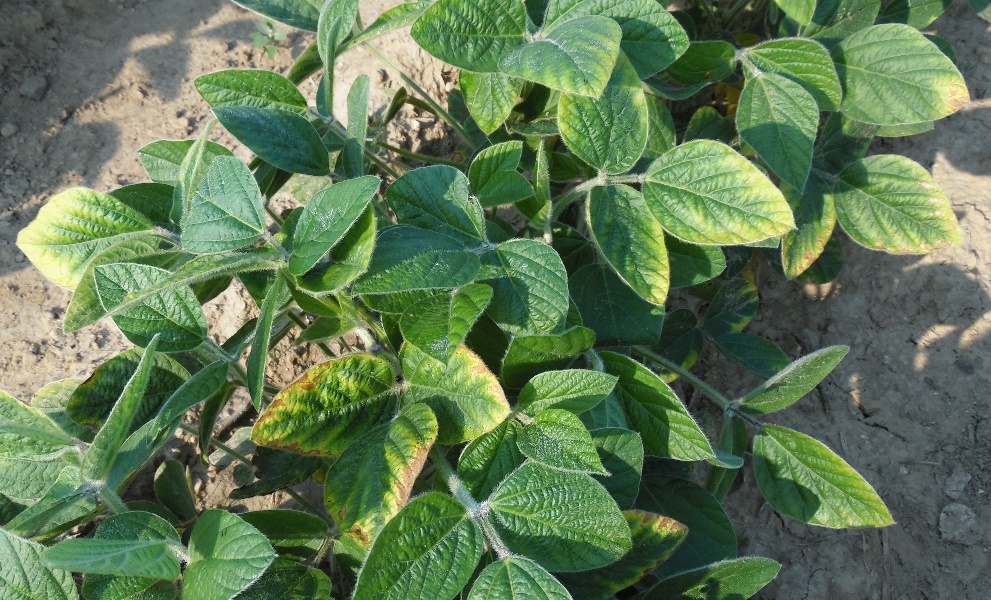
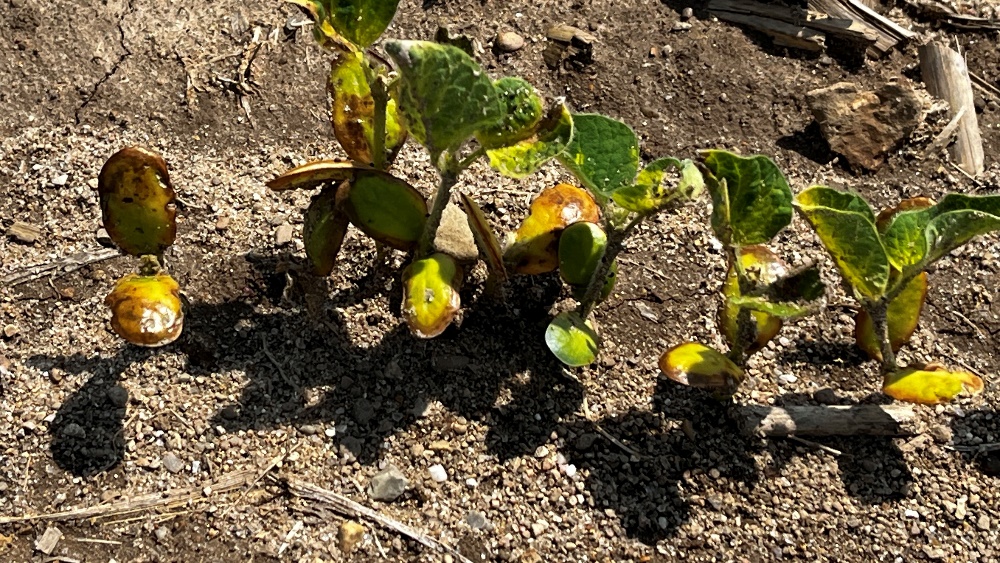
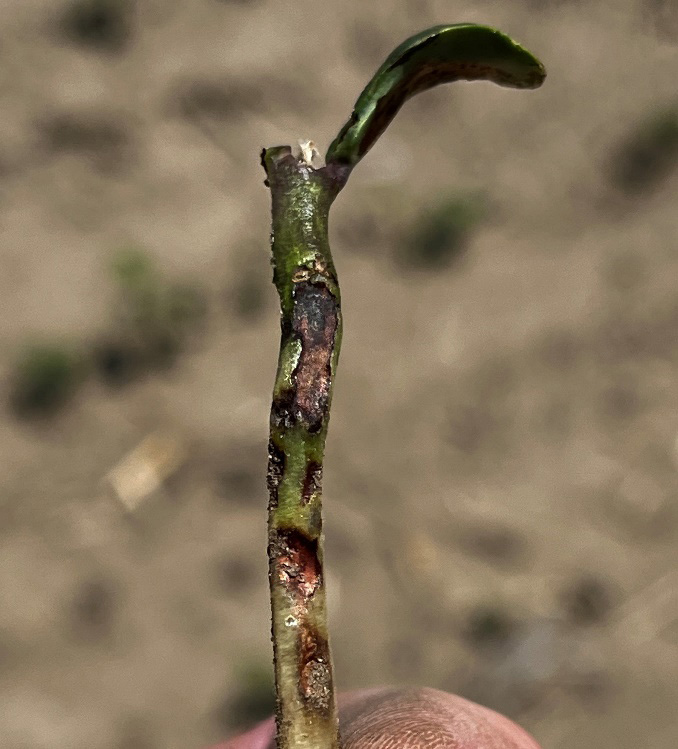
When you come across a symptom or sign that soybean stress or damage is occurring, consider the following steps to troubleshoot the root cause.
Step 1. Identify the initial symptoms. What caught your eye and caused you to investigate further? This may be leaf discoloration, feeding damage on leaves, a lack of emergence, etc.
Step 2. Eliminate the obvious. Is there an obvious solution to what is occurring? For example, in an area where soybeans are dead, is the field currently or was it recently underwater for an extended period? Was an herbicide application made after soybeans began emerging?
Step 3. Look for patterns. Is there a pattern to the affected plants? Damage in straight lines or perfect circles is usually caused by machinery. Problems with no obvious pattern are often due to biological factors, e.g., vertebrate and invertebrate pests, diseases, etc.
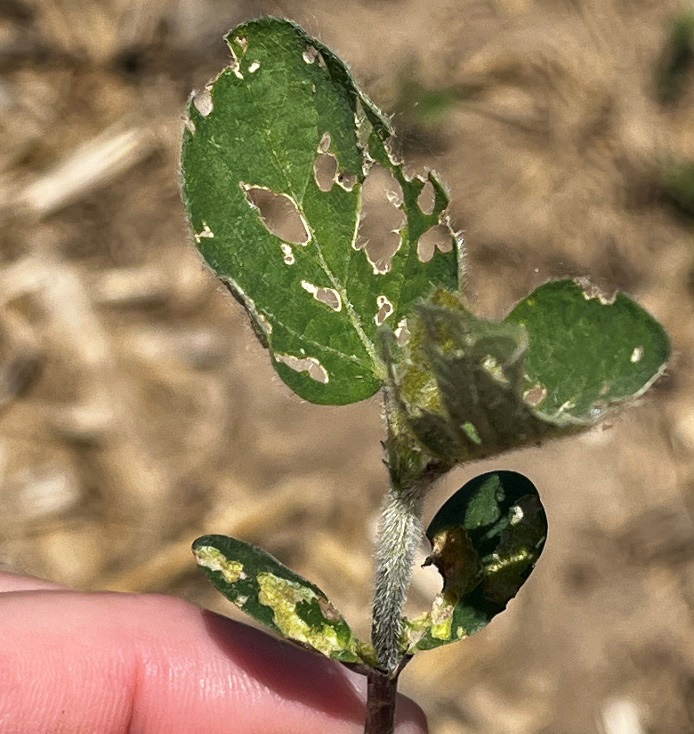
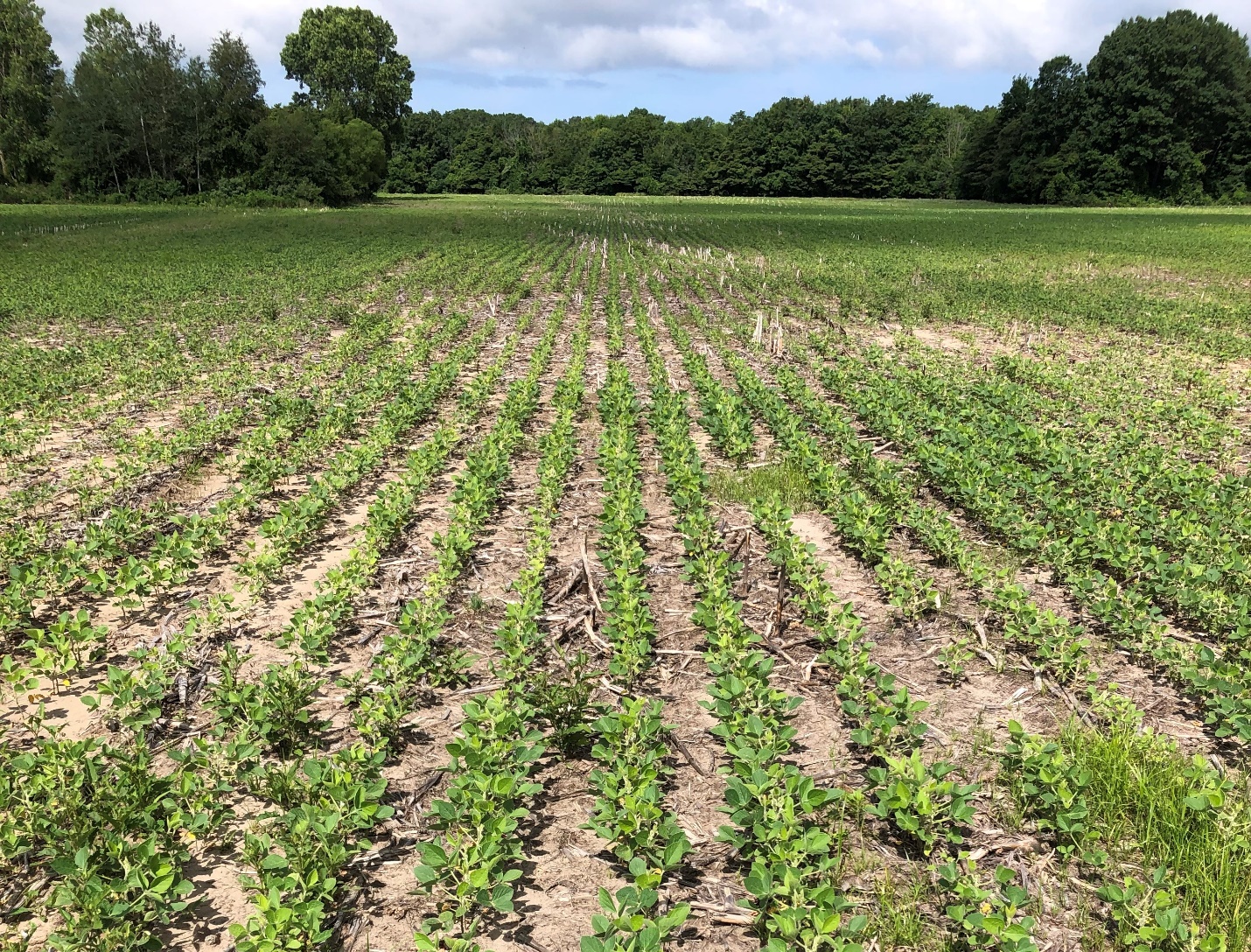
Step 4. Search for clues. This is the step that requires some digging, often literally. Compare the affected plants to neighboring unaffected plants. Dig up roots and dig around plants to see if soil-dwelling insects may be causing the problem. Consider soil drainage, what you know of pH, variety traits, planting and application records, etc.
Step 5. Collect samples, use diagnostic tools as needed. If you come across a pest or symptom you don’t recognize, there are many diagnostic tools that can help. Field guides, soil and tissue sampling, the Michigan State University Plant and Pest Diagnostics lab, local Michigan State University Extension educators and trusted agronomists are just a few options. There are smart phone apps available that reportedly can identify diseases (e.g., Agrio, Plantix, Plant.id), weed species (e.g., PictureThis, PlantNet, LeafSnap), nutrient deficiencies (e.g., Yara CheckIT) and other problems from uploaded images. These are not foolproof, but they could provide a good starting point.
Step 6. Keep good records. Finally, keep good records of what you find with dates and locations. Scouting apps exist, like FarmQA, Sirrus and AgraScout, that will easily allow you to enter notes and pictures at given GPS coordinates while in the field. This problem might come up again in the future, so adjust accordingly.
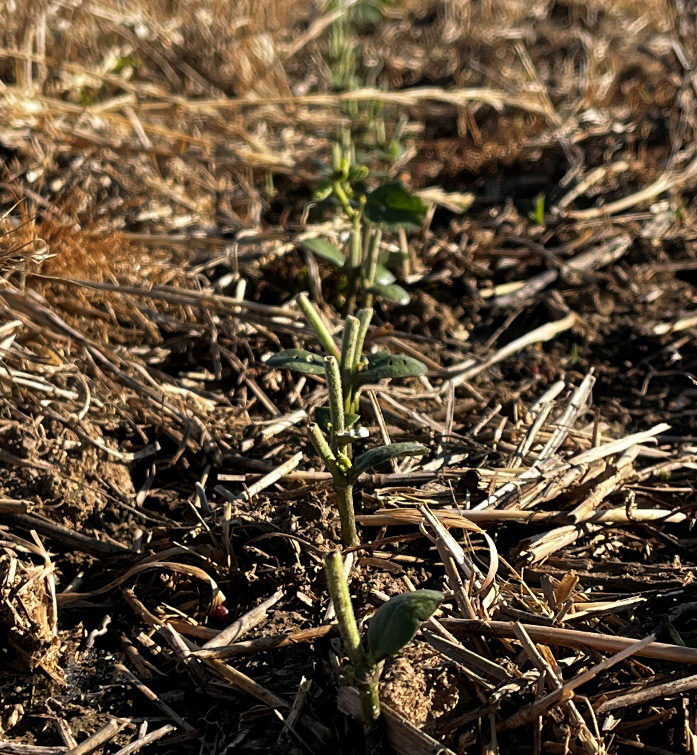
Determining the severity of the damage is just as important—and sometimes more so—as determining the root cause. Choose a representative area to assess the percentage of affected plants. Repeat the assessment throughout multiple parts of the field. Often, there is no curative action that can be taken, especially if the growing point is damaged or if damage occurs below the cotyledons. In these cases, keep good records and use integrated methods next year to prevent the same damage.
If stand loss is severe, consider whether replanting is warranted. Research among soybean agronomists has shown that an ideal stand of 100,000 plants per acre will maximize profit. However, surprisingly high yields can still be obtained with lower populations. For example, in Michigan soybean on-farm research trials in 2024, yields were not significantly lower at 70,000 populations compared with 100,000, 130,000 and 160,000 at five of 11 locations.
If replanting is needed, research from University of Wisconsin-Madison found that reseeding into the existing stand rather than tilling and starting over produced higher yields.
Because of wet ground and other factors outside our control, planting may still be a long push this spring that leaves little time to check on fields, but catching, diagnosing and assessing early-season crop damage as soon as possible will help lay the foundation for a good crop.



 Print
Print Email
Email